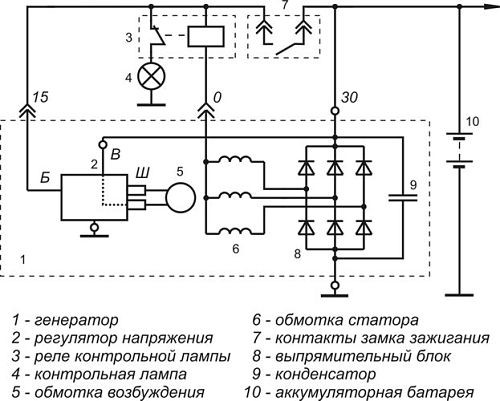How to check voltage regulators operation

Despite its compact size, the relay controller is one of the most important components in electrical equipment. This key actuator must be in good working order.
Principle of operation and purpose of the voltage regulator
The voltage regulator controls the car alternator, keeping its output voltage within the permissible limits. This ensures that the maximum permissible voltage on the battery and the vehicle's on-board network is not exceeded.
A voltage regulator is required to stabilise the voltage in the installation. When the car engine is running, the voltage in the car's electrical system must be at the same level. But the crankshaft rotates at different speeds and engine revolutions are not the same, as a result, the generator set produces different voltages. It is necessary to regulate this parameter, so that there were no failures in electrical equipment operation.

Signs of Regulator Relay Failure
The voltage regulator relay can look different:
- Relay-regulator in the form of brush assembly module, uses its structure as a supporting base;
- A separate element mounted on the housing on the support bracket;
The relay regulator, in any form, is a non-disassembling component. If this component breaks, it cannot be repaired.
If the voltage regulator fails, the failure of this element is accompanied by undercharging or overcharging of the battery.
Lack of charge causes the following problems:
- vehicle engine does not start well;
- the starter motor cannot turn the crankshaft;
- the car is completely de-energised
Caused by overcharging the battery, the electrolyte can boil off. It is easy to spot this problem: the terminals and casing are covered with a characteristic white deposit.
Relying only on external signs, it is impossible to speak only of a faulty voltage regulator. But, if the above symptoms are present, a comprehensive diagnosis of the alternator's circuits and circuitry should be carried out.
The process of diagnosing the voltage regulator relay is carried out using special devices. Practice shows that such a check requires a minimum of preparation from the master. Diagnosis is carried out according to a common scheme, and on cars of different brands the diagnostic process differs in some details. Regulator relay diagnostics is carried out together with the control of other generator circuits, so that the result of the check was more complete and accurate.
Professional Equipment
Convenient, easy to use, professional MSG Equipment is installed in specialised services. When used in service, it provides fast and accurate diagnostics. Thanks to advanced experience and innovative approach, stands and testers MSG Equipment are in demand on domestic and foreign markets. The geography of MSG Equipment exports includes CIS and EU countries.
The MS012 COM tester checks automotive voltage regulator relays with 12 V and 24 V voltage. The test is carried out under different loads. The MS012 COM tester is suitable for testing voltage regulators with different connection terminals.
The tester is always up to date as it has a USB connector for data updates. The tester is characterised by its compact size, modern design and accurate measurement. It has built-in short-circuit protection to prevent breakdown if the voltage regulator is connected incorrectly.
The tester has a compact size, modern design and accurate measurements.
The MS013 COM tester tests the operation of a 12V voltage regulator. The device performs diagnostics using two methods:
- testing the voltage regulator relay in the assembly with the generator (on the car or on the bench);
- diagnostics of the voltage regulator removed from the generator.
You can test any voltage regulator by using this tester.
MSG Equipment offers equipment for large service stations and small workshops. Modern, multi-functional test benches and testers – are advanced diagnostic devices. The use of MSG Equipment makes the work of the workshop staff much easier and faster.








